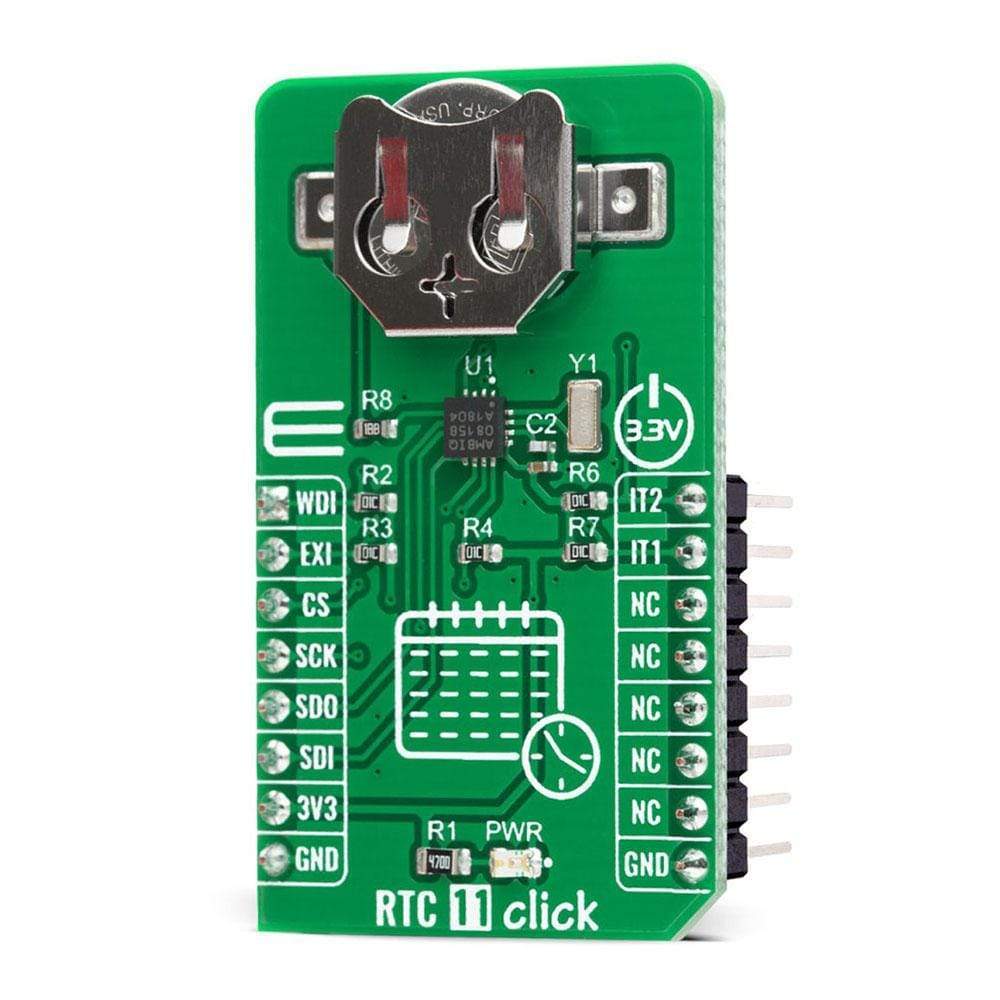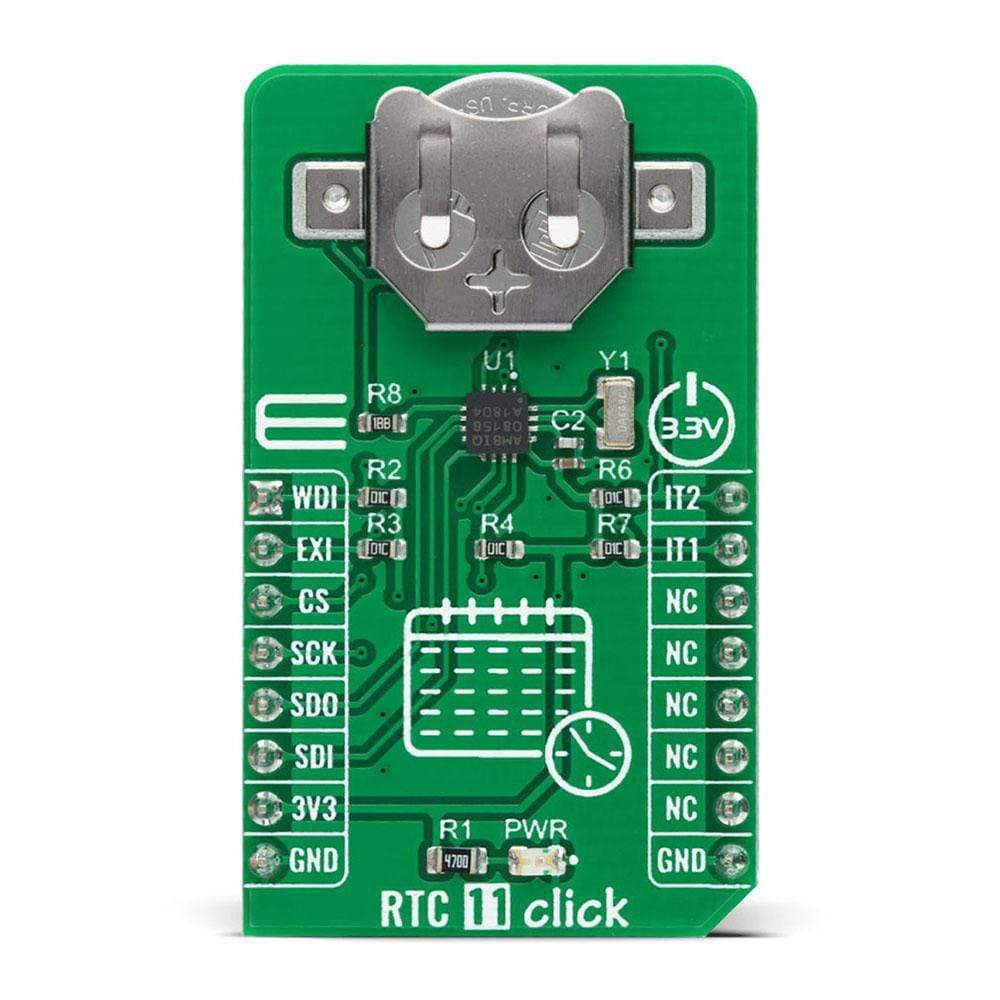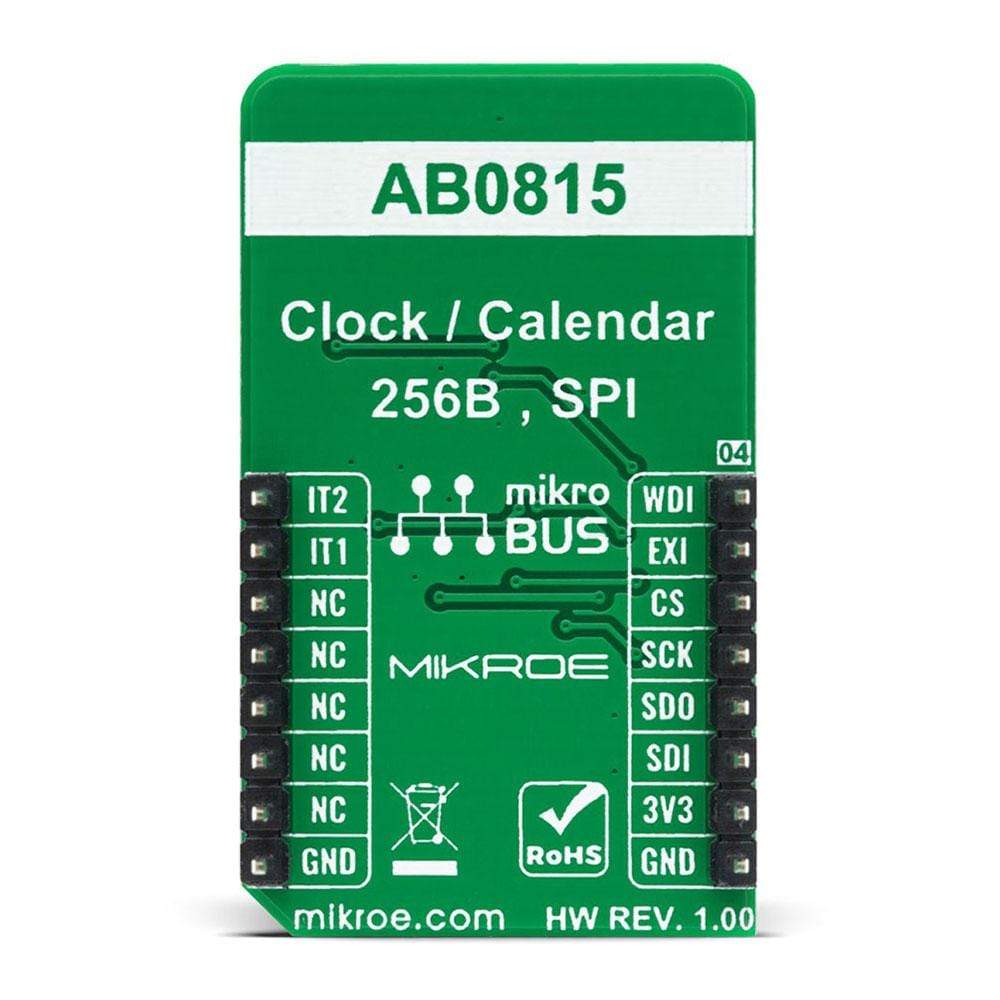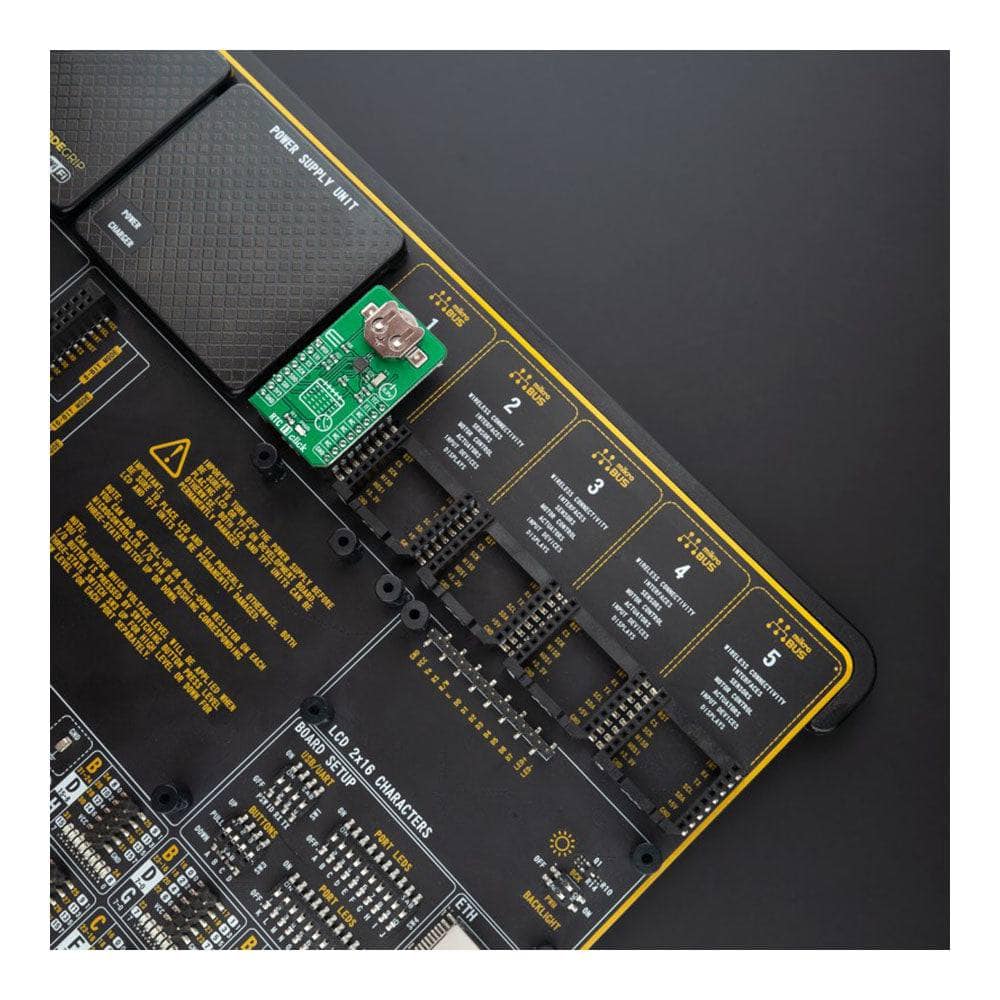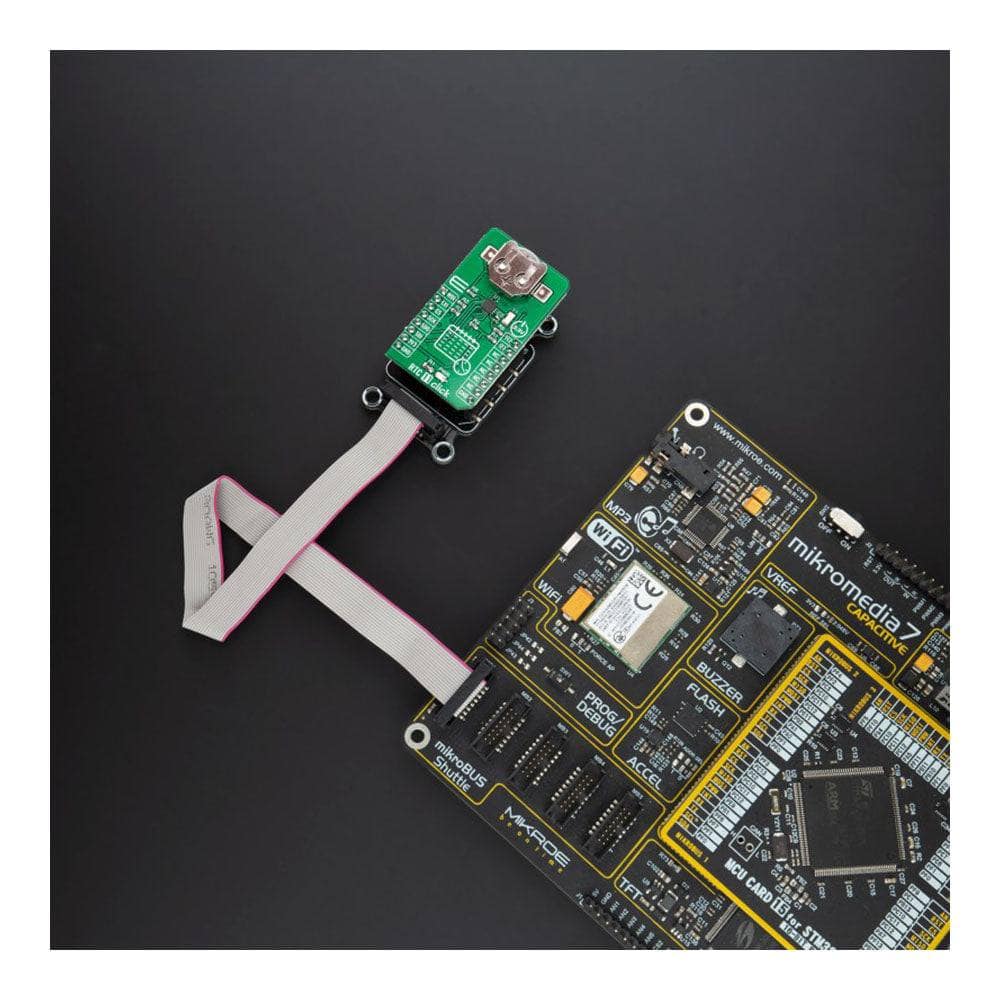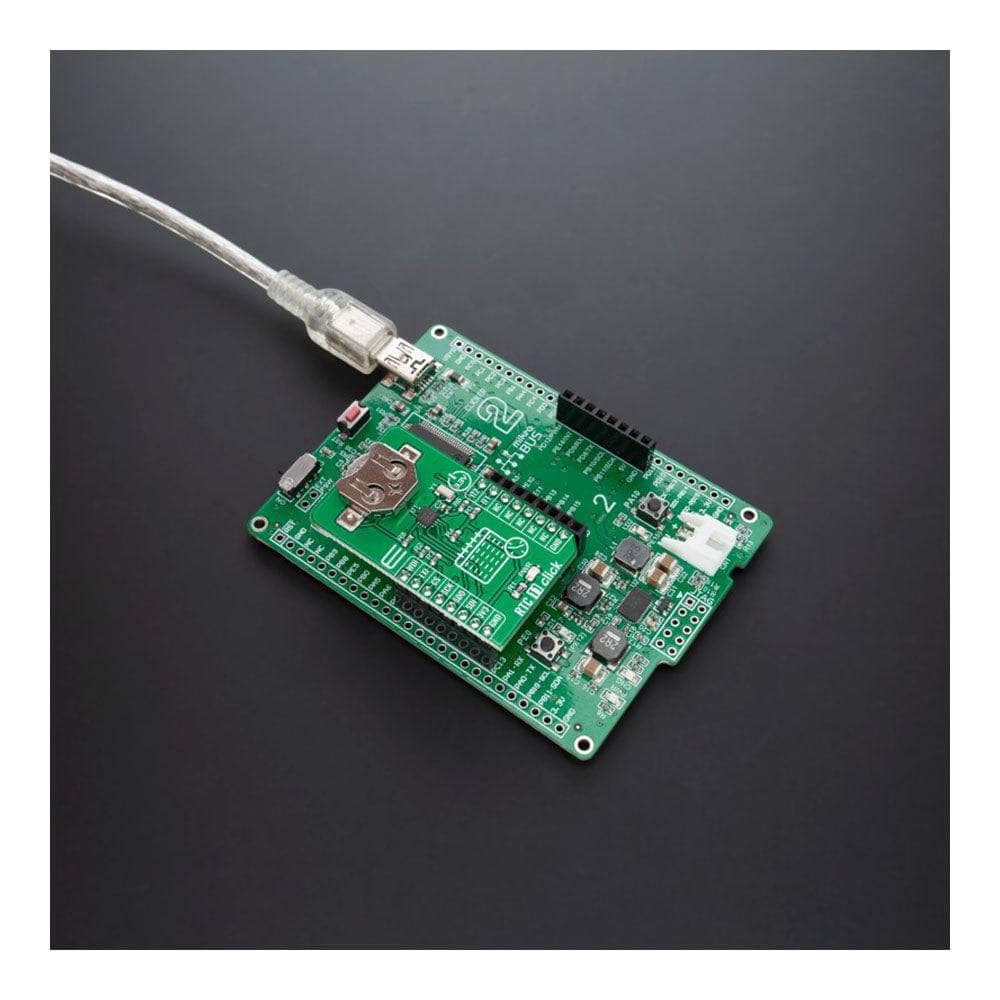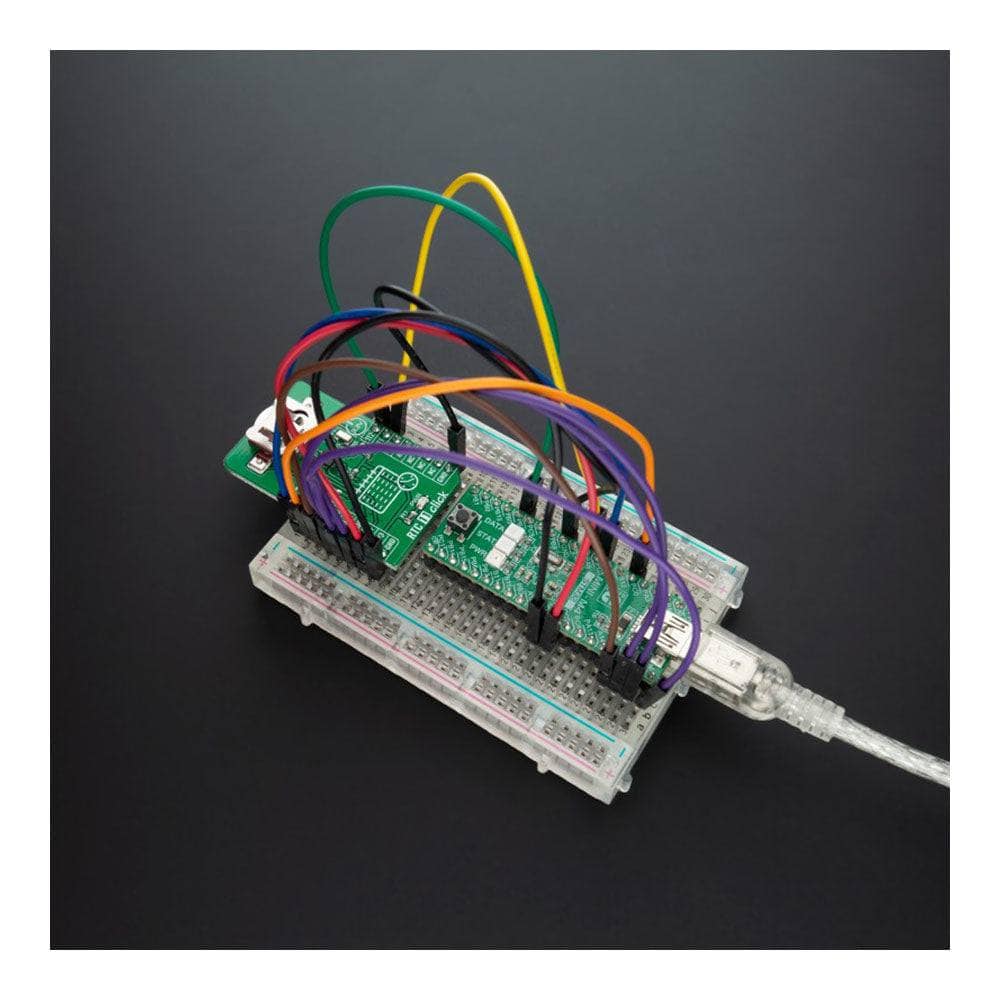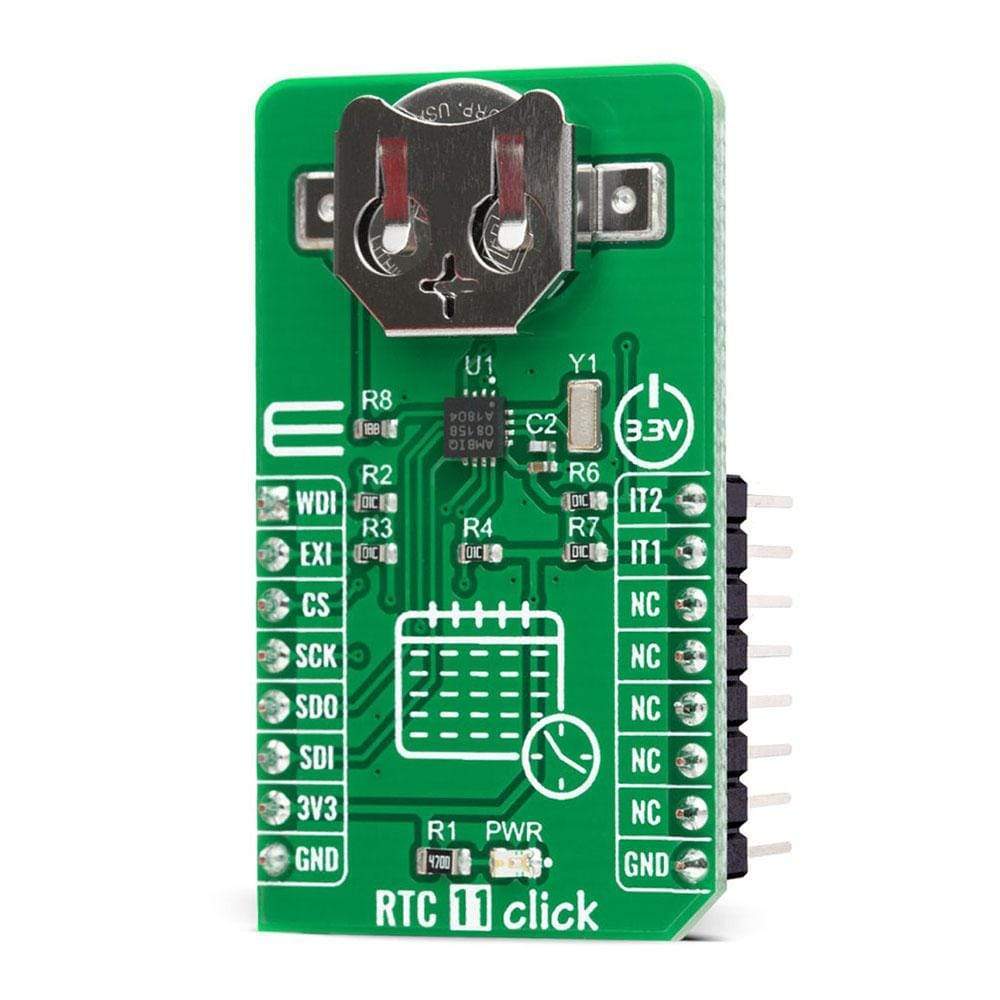
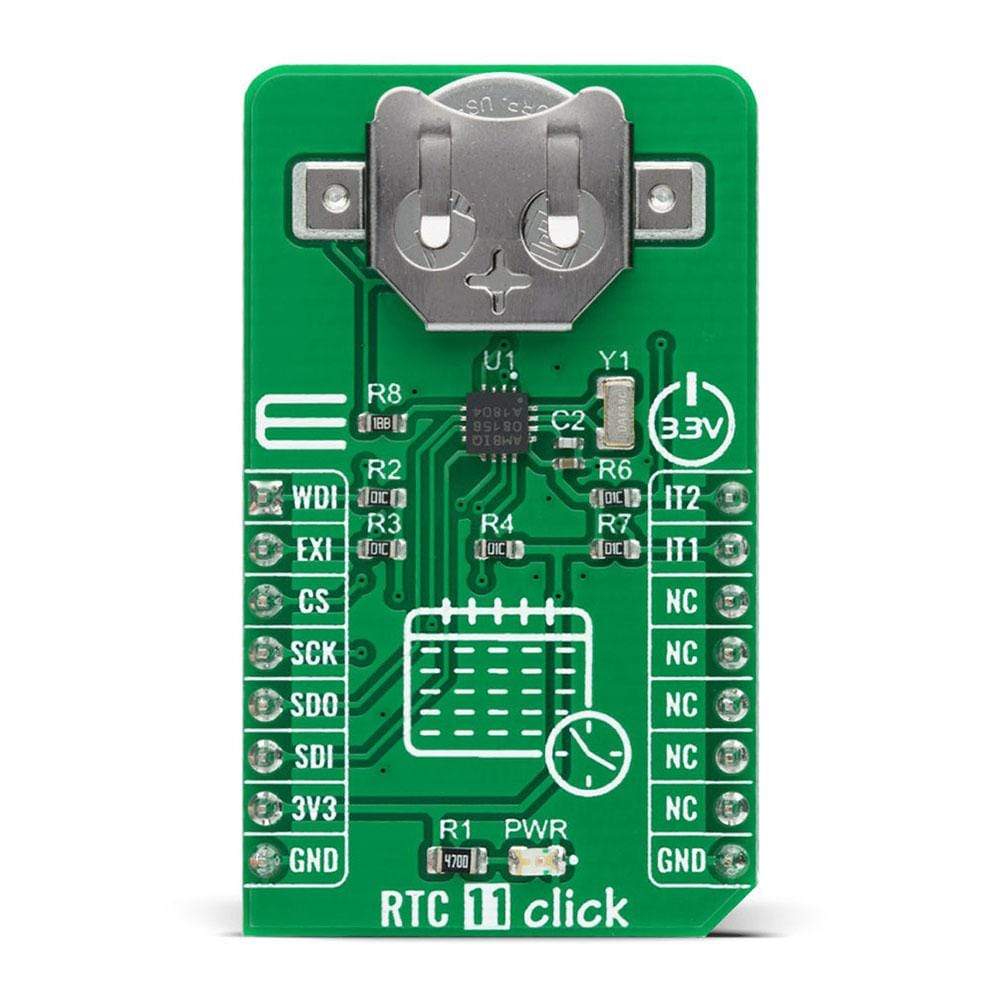
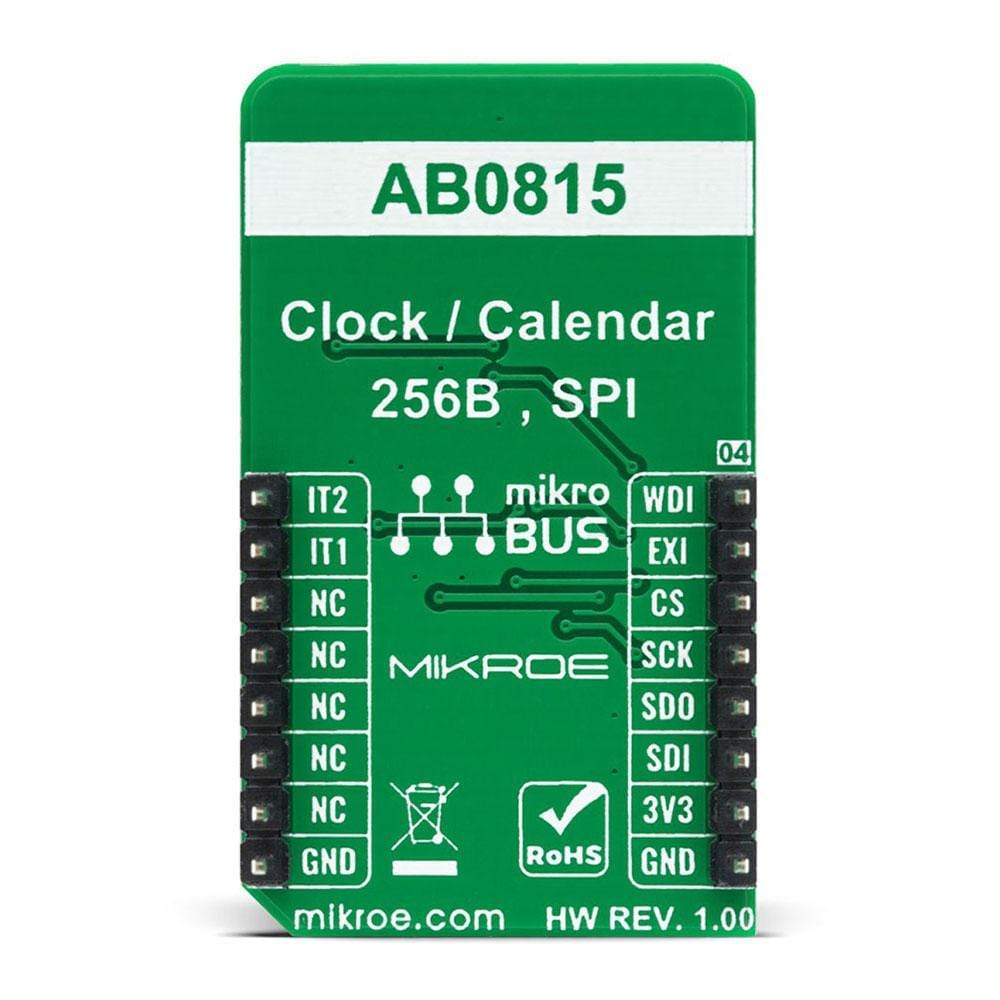
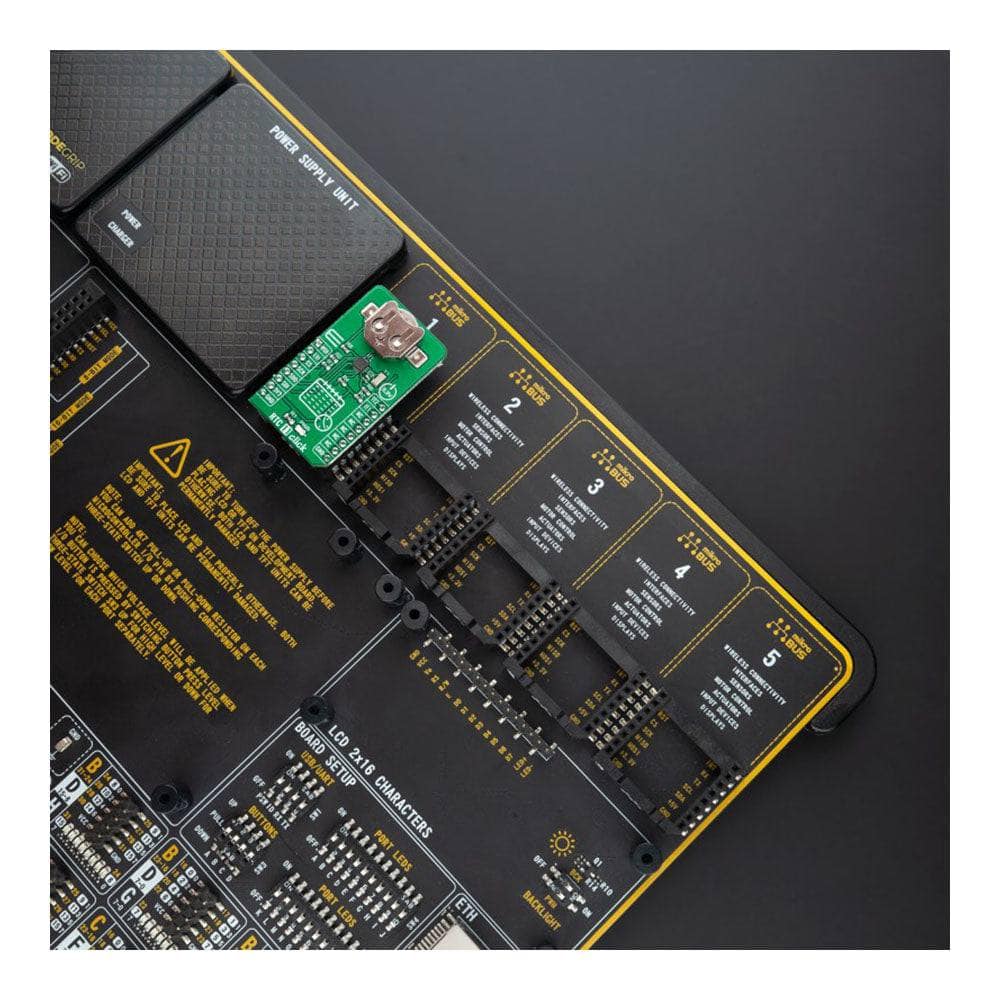
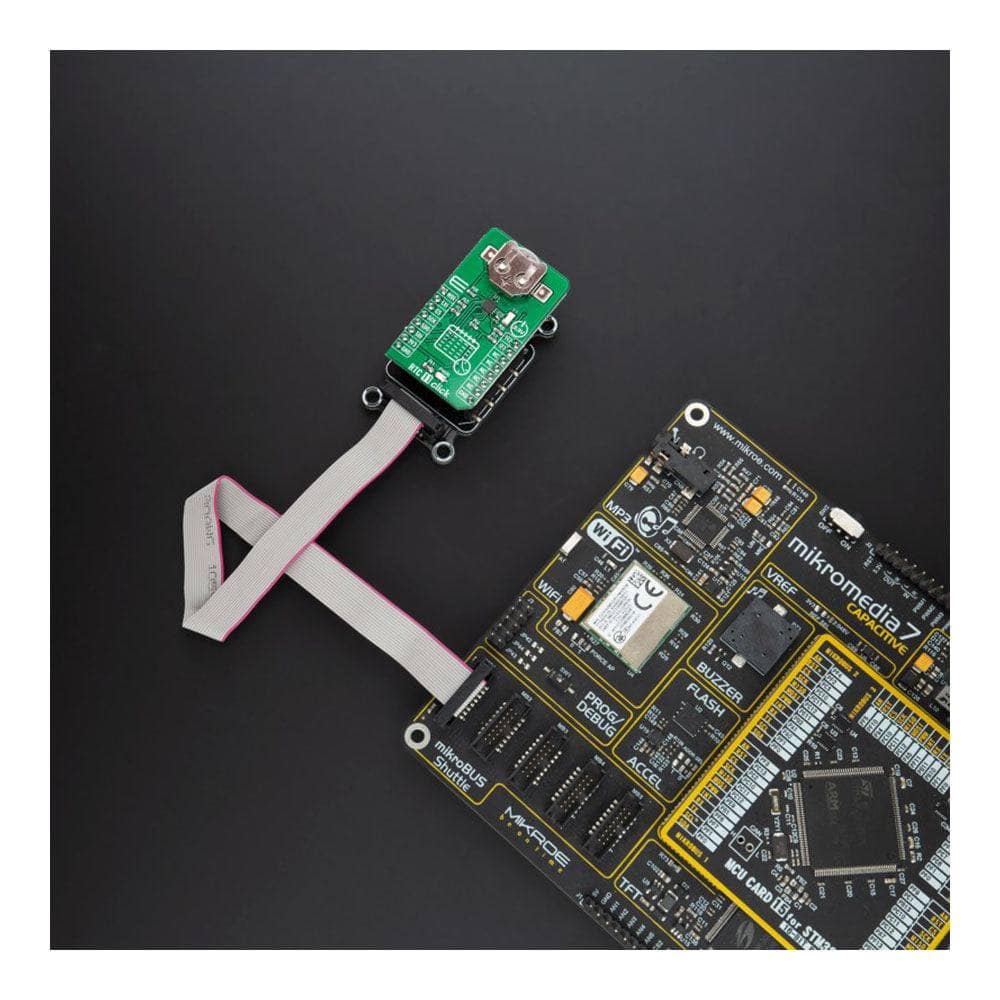
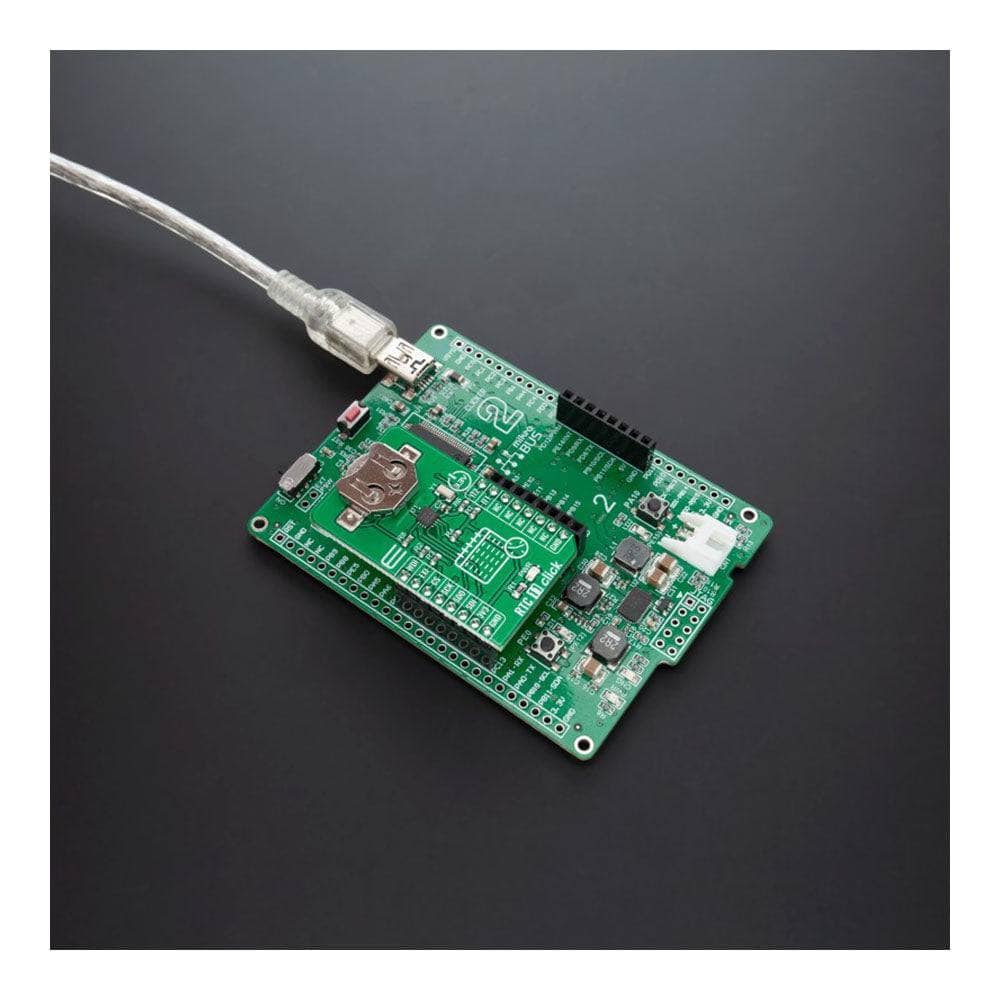
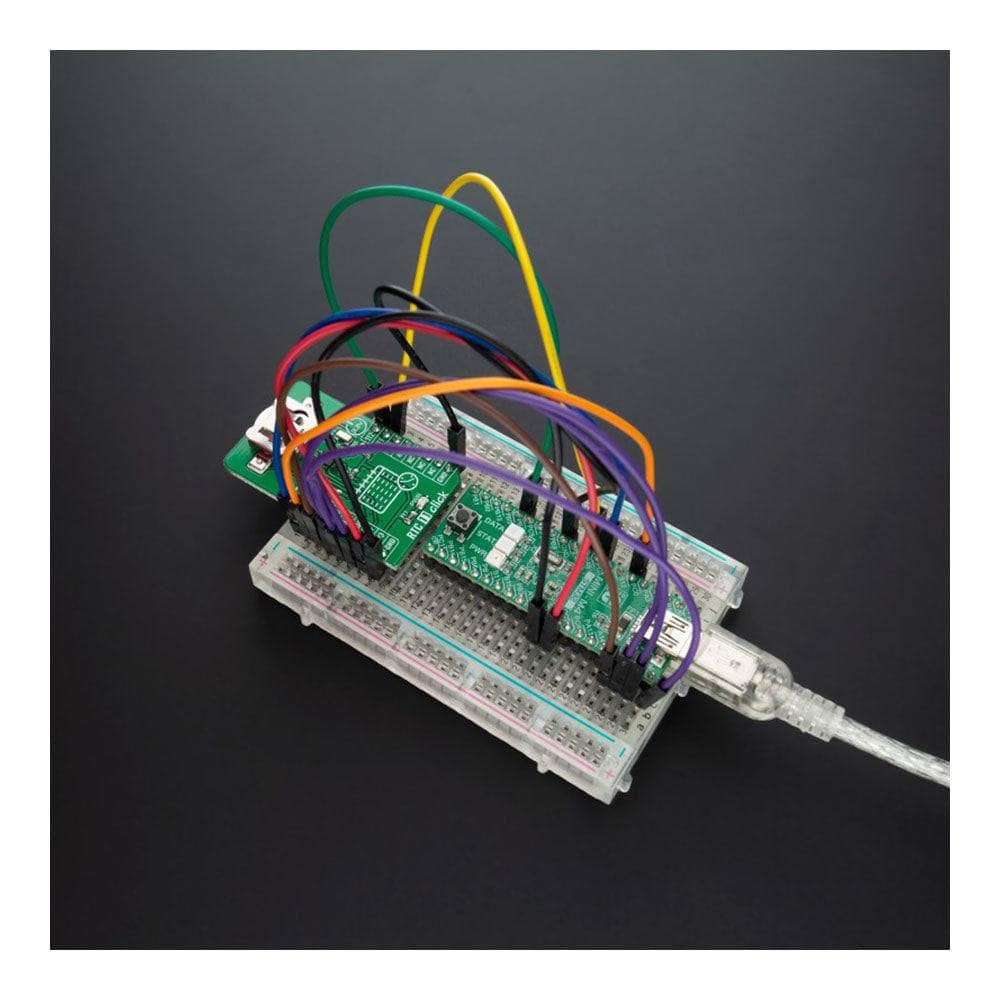
Key Features
Overview
The RTC 11 Click Board™ is a compact add-on board that contains a real-time clock IC designed to maximize battery life and reduce overall battery requirements in wearable applications. This board features the AB0815, an ultra-low power coupled with a highly sophisticated feature that set the real-time clock from Abracon LLC. The AB0815 includes an on-chip oscillator to provide low power consumption, full RTC functions such as battery backup, programmable counters, and alarms for timer and watchdog functions. Its power requirements are lower than any other industry RTC (as low as 22 nA) and communicate with MCU using the SPI interface. This Click Board™ is suitable for applications such as portable applications, wearables, medical equipment, and similar.
The RTC 11 Click Board™ is supported by a mikroSDK compliant library, which includes functions that simplify software development. This Click Board™ comes as a fully tested product, ready to be used on a system equipped with the mikroBUS™ socket
Downloads
La carte RTC 11 Click Board™ est une carte complémentaire compacte qui contient un circuit intégré d'horloge en temps réel conçu pour maximiser la durée de vie de la batterie et réduire les besoins globaux en batterie dans les applications portables. Cette carte est dotée de l'AB0815, une consommation ultra-faible couplée à une fonction très sophistiquée qui règle l'horloge en temps réel d'Abracon LLC. L'AB0815 comprend un oscillateur intégré pour fournir une faible consommation d'énergie, des fonctions RTC complètes telles que la batterie de secours, des compteurs programmables et des alarmes pour les fonctions de minuterie et de surveillance. Ses besoins en énergie sont inférieurs à ceux de tout autre RTC du secteur (jusqu'à 22 nA) et communique avec le microcontrôleur à l'aide de l'interface SPI. Cette carte Click Board™ convient aux applications telles que les applications portables, les objets portables, les équipements médicaux et similaires.
La carte Click Board™ RTC 11 est prise en charge par une bibliothèque compatible mikroSDK, qui comprend des fonctions qui simplifient le développement logiciel. Cette carte Click Board™ est un produit entièrement testé, prêt à être utilisé sur un système équipé du socket mikroBUS™
| General Information | |
|---|---|
Part Number (SKU) |
MIKROE-4288
|
Manufacturer |
|
| Physical and Mechanical | |
Weight |
0.02 kg
|
| Other | |
Country of Origin |
|
HS Code Customs Tariff code
|
|
EAN |
8606027380761
|
Warranty |
|
Frequently Asked Questions
Have a Question?
Be the first to ask a question about this.

